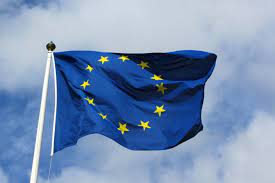Perizat RISBEK KIZI
European underground gas storage facilities are more than 50% empty. According to Gas Infrastructure Europe, a year or two ago, the figures were higher – 65% and 83%. At the same time, at the beginning of 2022, Russia reduced fuel supplies to Europe, and Gazprom stopped booking additional transit capacities.
The tension in the European gas market began last autumn. Spot fuel prices soared, and in December exceeded $2,000 per 1,000 cubic meters. According to experts, several reasons influenced the situation: reduced Russian gas supplies, increased demand for raw materials in Asia, reduced energy generation at European wind farms and low levels of stocks in storage facilities.
As a result, gas prices in Europe:
- higher than in Asia-Pacific countries – by USD 24/1 million BTU (1 BTU = 0.293 W).
- almost 14 times higher than the price of gas sold in the US according to the Henry Hub benchmark.
Ships carrying LNG change course from Asia to Europe
According to the Financial Times newspaper, liquefied natural gas (LNG) tankers bound for Asia change course midway towards Europe, where customers are willing to pay more due to abnormally high gas prices. During the year, China, Japan and South Korea were ahead of Europe in LNG purchases, but now Asian storage facilities are full and ship owners are turning them around to capitalize on rising prices in the European market.
The US exported five times more gas to Europe than Russia
According to Bloomberg, since the beginning of January the volume of LNG supplies from the United States to the European Union has reached a record 250 million cubic meters per day, increasing exports five times compared to Russia. It is noted that LNG supplies help offset “limited” exports from Russia and reduce the price of natural gas in Europe.
Moreover, on January 14, the U.S. government has held talks with several international energy companies on contingency plans for supplying natural gas to Europe if conflict between Russia and Ukraine disrupts Russian supplies, U.S. officials told Reuters. The US is concerned that any disruption in Russian gas supplies to Europe will exacerbate the energy crisis caused by fuel shortages. Here it is also worth emphasizing, the US supply of LNG allows European countries to respond more flexibly to Russia’s actions in Ukraine, reducing their dependence on Russian gas.
“Europe’s energy dependence on Moscow ties its hands”
On the other hand, the Wall Street Journal argues that Europe’s growing dependence on Russian gas and oil limits its room for maneuver in the growing crisis between Moscow and Washington. According to the publication, the main role of the energy issue in this confrontation is evidenced by the fact that on Thursday the US Senate rejected a bill on sanctions against the Nord Stream 2 gas pipeline, built to transport Russian gas to Germany.
According to official figures, despite not too cold weather and US aid, wholesale gas prices in northwest Europe are almost three times as high as they were a year ago. Analysts warn that before spring, gas prices may rise even more amid cold weather and declining reserves, and US aid will not be enough to compensate for the gas shortage in full.
Europe between US-Russia rivalry
The U.S. becoming an exporter of energy have changed the geopolitics of energy. According to Daily Sabah, Russia is determined to implement the Nord Stream-2 project, and with the simultaneous implementation of several projects, it does not want to reduce its share in the European market. On the other hand, the United States is increasing energy exports to enhance economic and political ties with its allies. In other words, the U.S.’ entry into energy exports has intensified competition among traditional energy exporters.
In any case, the energy crisis is another example of why Europe needs to be able to shape its own political and economic policies, including energy security.

